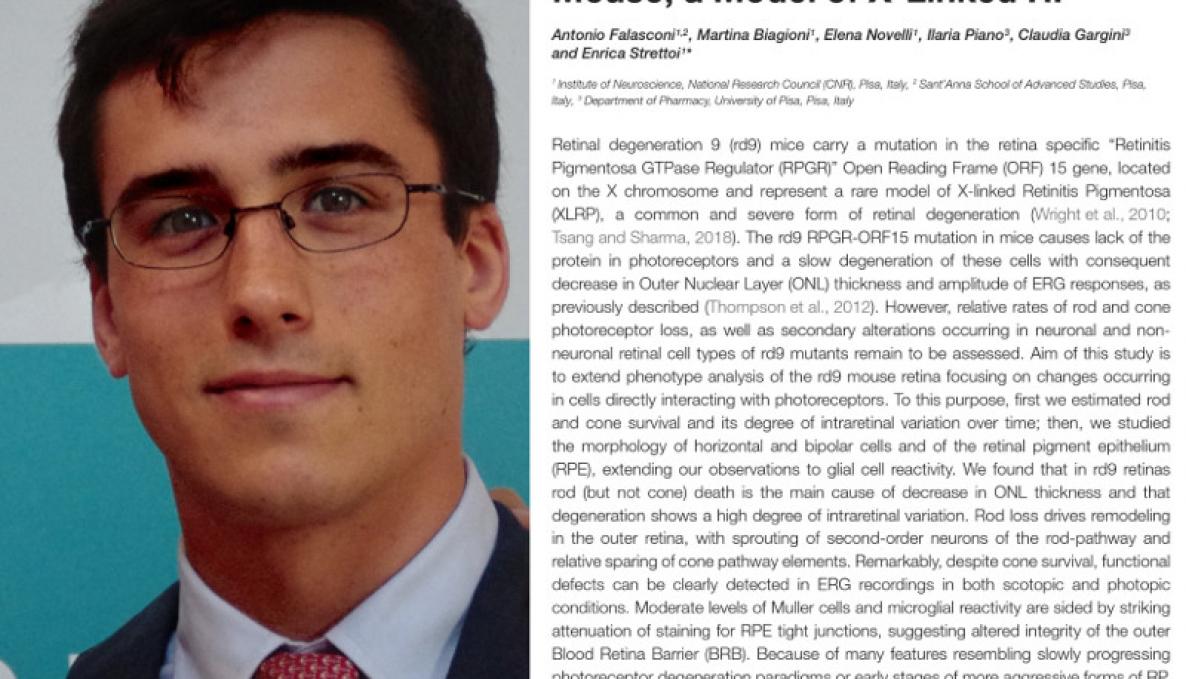A STORY OF TALENT: Sant’anna school med student is the first author of research on retinal disorder leading to vision loss published in Frontiers in neuroscience. “I AM INDEBTED TO MY PROFESSORS AND MENTORS IN PISA”

While pursuing his undergraduate degree in Medicine at Sant’anna School, 5 year med student Antonio Falasconi has published in Frontiers in Neuroscience as the first author on retinal disorder X-Linked Retinitis Pigmentosa research.
Retinitis pigmentosa is an inherited retinal disorder (in most cases leading to blindness) that affects 1 in 4000 people worldwide. In the end stages of typical rod-cone dystrophy leading to vision loss, patients can present with a cone-rod dystrophy phenotype, in which visual acuity loss and peripheral rod loss occur synchronously. Falasconi and colleagues estimated rod and cone survival and its degree of intraretinal variation over time. They studied the morphology of horizontal and bipolar cells of the retinal pigment epithelium, extending investigations to the mouse model that can be a useful tool to further investigate retinal changes associated to a process of photoreceptor death.
The research was carried out at the Institute of Neuroscience – Pisa National Research Council, under the supervision of Enrica Strettoi who is currently working on retinal neurobiology, the interactions between rods and cones, the organization of types of bipolar cells contributing to the scotopic and photopic pathways, and the role of ganglion cells in shaping retinal circuitry. “When I applied to the Institute of Neuroscience I wanted to pursue research that involved retinal pathology using neuroscience approaches and reconnecting neurons in the visual system – said Antonio Falasconi. I hoped the Institute of Neuroscience would be a good opportunity for me. The 3 week placement has given me invaluable lab experience and enabled me to write the outline and hypothesis for my research paper”.
Thanks to supervisor Enrica Strettoi and tutor Fabio Recchia from Sant’Anna School Life Sciences Institute, Antonio Falasconi had the opportunity to explore new techniques and learn about pathological glial cell phenotypes contributing to disease progression in the retina. He has developed his understanding of the genetic basis of the disease allowing gene therapy as a potential therapeutic strategy. In addition to the research experience in Pisa Neuroscience Institute, Falasconi has worked with research staff at the National Research Council Institute in Padova, at the Friedrich Miescher Institute for Biomedical Research in Basel, the Brain Research Institute in Zurich and the Laboratory of Molecular Biology in Cambridge.



